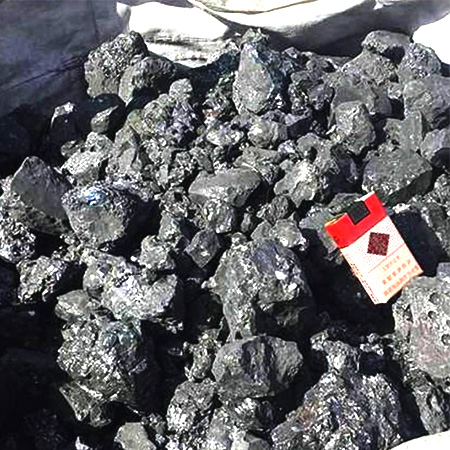High Carbon Silicon and Silicon Slag are both by-products of the production of metallic silicon, also known as silicon-carbon alloy or Si-C alloy. Metallic silicon is an important industrial raw material for formulating alloys, preparing polycrystalline silicon, and producing organic silicon. Different models of silicon metal have different carbon content and silicon content. The carbon content in silicon 553 is generally less than 0.1%, and the carbon content in silicon metal 2202 can be less than 0.03%. However, no matter which model, the carbon content will not exceed 0.5%. The carbon content in Silicon Slag is generally higher than 3% and not more than 7%.
When the carbon content exceeds 10%, we call it Silicon Carbon Alloy. Where does the high carbon content in its ingredients come from? It turns out that in the production of metallic silicon, the main raw materials are silica and charcoal. Among them, charcoal is the main source of C in high-carbon Si slag. After the reduction reaction, the silicon in the silica will form silicon metal with extremely high purity. In this process, a portion of high carbon silicon and silicon slag will be form incidentally.
Difference Between High Carbon Silicon and Silicon Slag
The main difference between High Carbon Silicon and Si Slag is: Silicon Slags are metal silicon dross(waste), generally containing no more than 7% carbon and mostly 40%-60% silicon. High-carbon silicon is a by-product which from the production of metallic silicon. Since most of the silicon dioxide will converte into metallic silicon and there will be certain part of un-removed carbon, the silicon and carbon content are high. The silicon content of SIlicon recarb is above 60% and the carbon content is 15%, sometimes more than 18%. Since Si and C are both active elements and easily react with oxygen, both them can be used as deoxidizers in converter steelmaking.

These two products can replace ferrosilicon, silicon carbide, and carbon reducing agents, reduce the amount of deoxidizer, and are quite useful in the deoxidation and alloying process of converter smelting, with stable effects. The chemical composition, mechanical properties and internal control quality of steel are superior to traditional processes. The carbon content is high, and it reacts with oxygen to release heat, thus heating the molten steel for deoxidation. It is easy to increase and control the carbon content in molten steel.
High carbon silicon and silicon slag raw materials are in block form, similar to most ferroalloy products. After crushing treatment, they generally form blocks with a particle size of 10-100mm, which is convenient for users to use. It can also be processed into silicon granules, silicon powder, silicon briquettes and other particle sizes.
